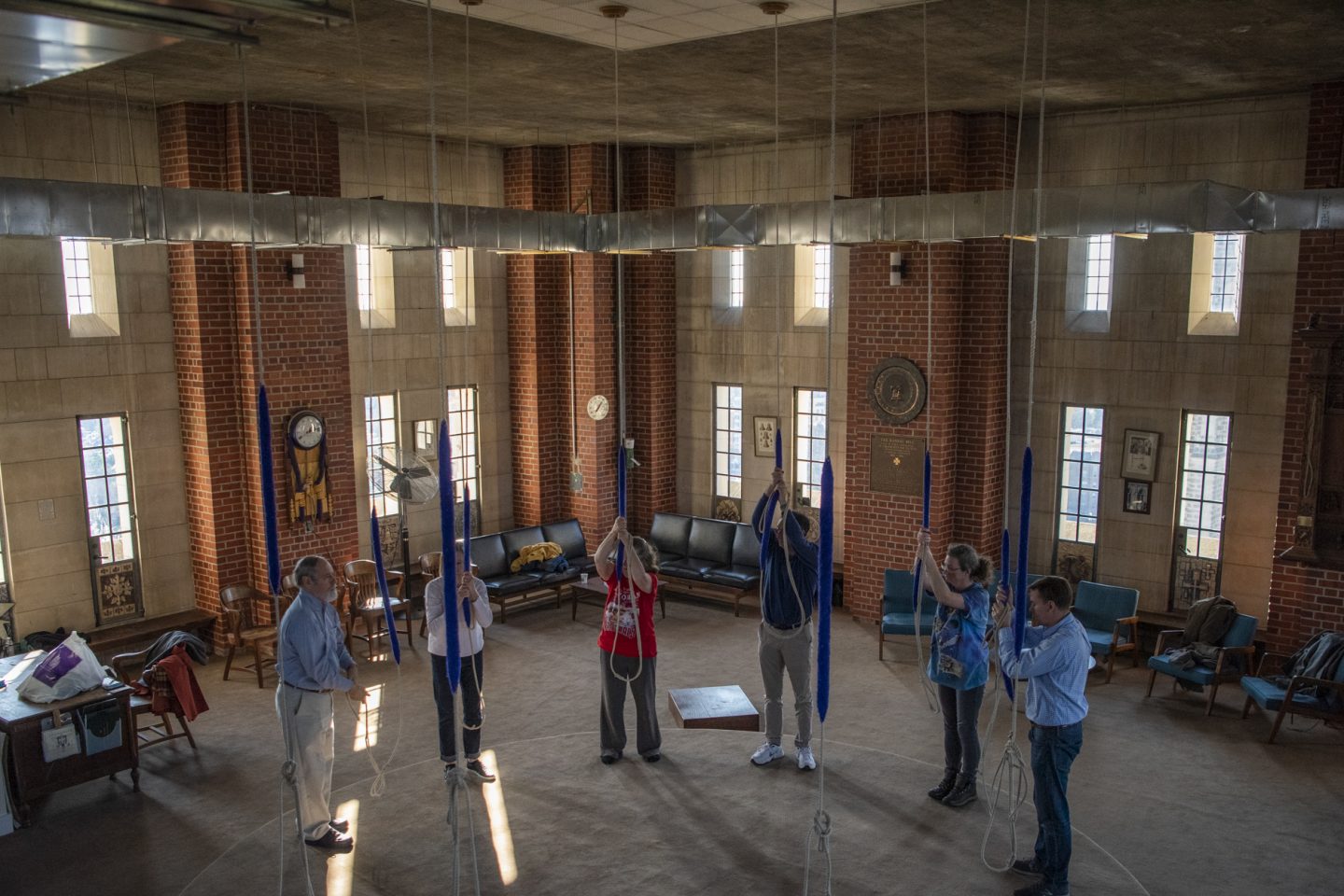
Peal Bells
The bells are rung by a band of ringers, one person to a bell. To protect their hearing, the ringers stand in a separate room beneath the bells and ring the bells using ropes.
The Cathedral’s Peal Bells
In a chamber above the Cathedral’s carillon, high up in the Gloria in Excelsis tower, resides a 10-bell peal set for change ringing, a form of bell ringing begun in England in the 17th century. Cast by the Whitechapel Bell Foundry of London and installed in 1963, each bell bears an inscription. The bells vary in diameter from 28 inches to 55 inches, and in weight from 608 pounds to 3,588 pounds.
Peal bells play mathematical patterns, not melodic music, because peal bells cannot play a rhythm. It takes two seconds for a peal bell to ring and be ready to ring again. The casting rotates to strike the clapper, and the bells are played by pulling ropes.
The bells are rung by a band of ringers, one person to a bell. To protect their hearing, the ringers stand in a separate room beneath the bells and ring the bells using ropes. Ringers play patterns of notes called “methods,” which are more mathematical than tuneful. Each of the Cathedral’s bells can be rung approximately once every two seconds, allowing for the rotation of the bell from mouth-up through mouth-down and back to mouth-up position. A “peal” is a complete set of changes (switches in order of the bells) on a given number of bells. To illustrate, here is an example of the simplest four-bell method of change ringing, called “Plain Hunt.” The bells are numbered according to their pitch, with the highest bell (or “treble”) being number 1 and the lowest (or “tenor”) being number 4:
1 2 3 4
2 1 4 3
2 4 1 3
4 2 3 1
4 3 2 1
3 4 1 2
3 1 4 2
1 3 2 4
1 2 3 4
A quarter peal on six bells, consisting of 1260 changes, takes approximately 45 minutes; ringers may not take breaks or switch off. A full peal on all 10 bells, consisting of 5,040 changes, would take about 3 hours 25 min and are attempted for special occasions such as Easter. To ring all the possible mathematical permutations on 10 bells would take approximately 123 days, ringing day and night.